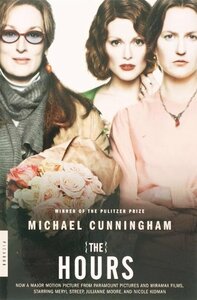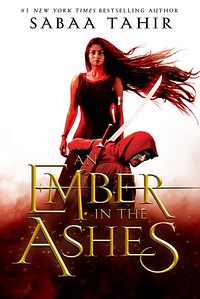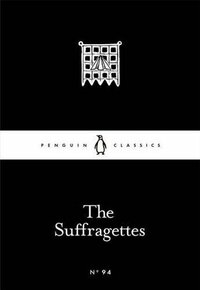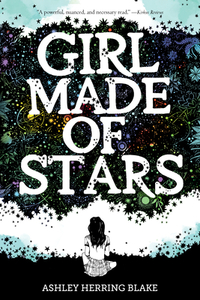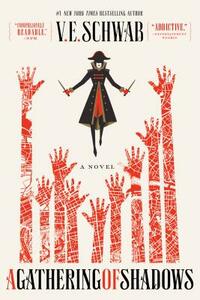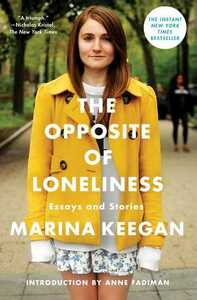You need to sign in or sign up before continuing.
Take a photo of a barcode or cover
mercurialreading's Reviews (107)
This is a lovely bind up of primary documents relating to the suffrage movement in Great Britain (though there is a speech from Pankhurst, 'Freedom or Death', in the US). I read a number of these documents and have seen some of the propaganda items separately, but it is nice to have a bind up of all of them together. This would definitely be a great introduction to the movement for anyone interested in reading/researching the suffrage movement, but who are not sure where to start.
In terms of the chosen works- a really solid general overview at the movement, as well as the push against the movement (anti-suffrage)- which I appreciated the inclusion of the anti-suffrage materials because it gives a well-rounded understanding that not all women pushed for suffrage, it was not a "shoulder-to-shoulder" experience for all.
In terms of the chosen works- a really solid general overview at the movement, as well as the push against the movement (anti-suffrage)- which I appreciated the inclusion of the anti-suffrage materials because it gives a well-rounded understanding that not all women pushed for suffrage, it was not a "shoulder-to-shoulder" experience for all.
While my thesis is not primarily on the British Suffrage Movement, I have had to do quite a bit of reading on it for my introductory chapter and to gain a better picture of my thesis subject. So in general, I do have a decent background on the Movement. I originally was not going to pick up this book, but being in London, right outside of Parliament, I felt this strong need to buy it, so I did. And let me say I am glad I did- and not just for my thesis. This historical monograph that is definitely written for a general audience, not just an academic one, is rich with information on the British Suffrage Movement dating back to, as the summary states, Wollstonecraft’s famous A Vindication of the Rights of Women from the late 1700s. The book goes into great detail of the origins of the Movement, the Movement itself- the fractions in the Movement, the Anti-Suffrage Movement and some major points in the Movement, as well as where the Movement went during and after the Great War. I would say if you want to start somewhere with learning about the British Suffrage Movement, this is a wonderful place to start. (How many times can I use the term "movement"?!)
What I really enjoyed about the book personally is that it not only focuses on the "big" faces of the Movement, such as the Pankhursts and Millicent Garrett Fawcett (do not get me wrong, I love all those women and men), but it also focuses on other "lesser known" women and men. I think when people think about the Women's Suffrage Movement, whether in Britain or anywhere else, the idea that a man could have been a part of it (and not in the "women should not have the vote" "category" so to speak) is not necessarily thought of by many. To see that highlighted in this book was something I appreciated. It, I think, helps to breakdown that gendered divide that is thought of with the Movement and, too, later with feminism.
Next, the learning portion for me. Along with learning about lesser known figures, I learned a lot about the Movement in terms of the friction that divided it- some thought one political party might have helped them over another, the divide over whether militancy was the best route, and so forth. And, in terms of a learning moment- this one really got to me, the difference between a suffragist and suffragette. I have been using the terms as if they mean the same thing, but they actually do not! Maybe that was ignorance on my part after having read so much on the Movement for my thesis, but that was a big learning moment. I definitely have to keep that in mind when writing my thesis from now on.
The final aspect of the book that I will talk about are the sources. I loved not only how many sources are used, but the variety of sources used. There are a myriad of letter and newspaper excerpts, pamphlets, amazing photographs and imagery, and so much more. I have to say, the imagery is my favorite because of how powerful they are. But overall, with the sources, Hawksley really dived headfirst into them and came out with something that included so many without being overwhelming to me as a reader.
Again, if you are looking for a place to start with learning about the Suffrage Movement in Britain, I highly recommend this book. Like I said, it is not just for an academic audience, so there is not a lot (if any) jargon that may make it seem dry because this book was far from dry. (I must add this note: I am NOT saying academic writing is dry... if that were the case I would not be training as a historian. I just remember my undergraduate years of individuals finding such historical materials dry, when really it was just a matter of lacking interest in the topic, which there is nothing wrong with that, but I am going to stop here before I dig myself into a hole).
The book is an easy 5-star read for me. I think this would be a great asset to any classroom and anyone looking to learn or expand their knowledge of the British Suffrage Movement.
(Cross-Posted: http://pursuitoftales.com/reviewmarchwomenmarch/)
What I really enjoyed about the book personally is that it not only focuses on the "big" faces of the Movement, such as the Pankhursts and Millicent Garrett Fawcett (do not get me wrong, I love all those women and men), but it also focuses on other "lesser known" women and men. I think when people think about the Women's Suffrage Movement, whether in Britain or anywhere else, the idea that a man could have been a part of it (and not in the "women should not have the vote" "category" so to speak) is not necessarily thought of by many. To see that highlighted in this book was something I appreciated. It, I think, helps to breakdown that gendered divide that is thought of with the Movement and, too, later with feminism.
Next, the learning portion for me. Along with learning about lesser known figures, I learned a lot about the Movement in terms of the friction that divided it- some thought one political party might have helped them over another, the divide over whether militancy was the best route, and so forth. And, in terms of a learning moment- this one really got to me, the difference between a suffragist and suffragette. I have been using the terms as if they mean the same thing, but they actually do not! Maybe that was ignorance on my part after having read so much on the Movement for my thesis, but that was a big learning moment. I definitely have to keep that in mind when writing my thesis from now on.
The final aspect of the book that I will talk about are the sources. I loved not only how many sources are used, but the variety of sources used. There are a myriad of letter and newspaper excerpts, pamphlets, amazing photographs and imagery, and so much more. I have to say, the imagery is my favorite because of how powerful they are. But overall, with the sources, Hawksley really dived headfirst into them and came out with something that included so many without being overwhelming to me as a reader.
Again, if you are looking for a place to start with learning about the Suffrage Movement in Britain, I highly recommend this book. Like I said, it is not just for an academic audience, so there is not a lot (if any) jargon that may make it seem dry because this book was far from dry. (I must add this note: I am NOT saying academic writing is dry... if that were the case I would not be training as a historian. I just remember my undergraduate years of individuals finding such historical materials dry, when really it was just a matter of lacking interest in the topic, which there is nothing wrong with that, but I am going to stop here before I dig myself into a hole).
The book is an easy 5-star read for me. I think this would be a great asset to any classroom and anyone looking to learn or expand their knowledge of the British Suffrage Movement.
(Cross-Posted: http://pursuitoftales.com/reviewmarchwomenmarch/)

